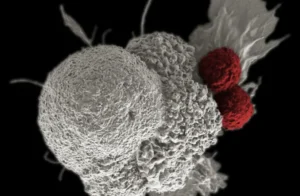The goal is to develop a technology that will be useful and destroy solid tumors regardless of the mutations and the type of cancer.

Think of an engineer requested to build a bridge. He won’t build a bridge designed to be used for 50 years with 70% durability but will probably build a bridge with 100% durability to be used for over 30 years.
It will always be preferable to have a 100% success rate over one that only partially works (in the case of the bridge – collapsing), even if it means being perfect for a shorter period.
Success in cancer therapy should achieve a high quality of life and have long-term efficacy. If we refer to chemotherapy and radiotherapy, they weaken the patient’s body and reach a toxicity threshold getting the patient’s body to a point where one is unable to continue with the treatments, even though they are effective for the short term.
Since the tumor recurs and erupts, chronic treatment is required, which can be performed continuously without side effects or the development of mutations that develop after each outbreak.
It is best to avoid the need to develop different treatments for each type of cancer.
The goal is to develop a technology that will be useful and destroy solid tumors regardless of the mutations and the type of cancer.
Technological developments
Following nine years of research, using nanoparticles, iron particles and electromagnetic radiation, I believe that current technological developments are the basis for cancer tumors even to stage four cancer.
The fact that metastases and cancerous tumors are sensitive to heat is a well-known scientific fact, which will be explained later. Interestingly, this fact was known thousands of years ago.
The earliest documentation of the detection and treatment of cancerous tumors appears in eight Egyptian papyruses from 3,400 years ago. They, too, treated cancerous tumors with heat, probably by attaching hot metal near the tumor area and local heating of the tumor area.
How is it that malignant cancer cells are sensitive to heat? The sensitivity of the cancer cells to heat is due to biophysical weaknesses that can be exploited to destroy cancer cells with hyperthermia (hyper = a lot, thermia = heat) which is a method of high heat treatment that causes the destruction of malignant cells in the body.
Cancer cell structure
To begin with, a cancer cell has a structure that is damaged at a temperature between 41º-45º C. In contrast, healthy cells are more durable to heat and can tolerate higher temperatures of 50º and above.
Secondly, the vascular structure in the cancerous tumor is deformed and twisted and therefore the blood flow in a cancerous cell is half as low as in healthy tissue, which means there is a limited removal of heat from the cancer cell. If we could transport nanoparticles to malignant cancer tumors and then heat the particles by electromagnetic radiation, we will be able to develop a technology that will destroy the cancerous tumors.
There are two additional flaws in cancer cells that can be used in the development of this technology. The first is “leakage” due to increased permeability of the blood vessels in the tumor environment, allowing the penetration of nanoparticles from the bloodstream to the cancerous tumor.
The second is an abnormal lymphatic system, which does not evacuate the nanoparticles reaching the cancerous tumor and allows them to accumulate in it and therefore they can be used against the cancer cells.
All the information we acquired so far, in addition to years of studies demonstrating encouraging results alongside the daily engagement with cancer treatment, I believe we have never been closer to the revealing of an effective treatment for cancer based on technology.
Fortunately, in Israel there are a number of groundbreaking companies working alongside us, which are rapidly approaching the moment when humanity will be able to cope with cancer in a proven way and thus save many lives.
The writer is founder & CEO of New Phase, a company that has developed technologies for the destruction of cancer metastases.
